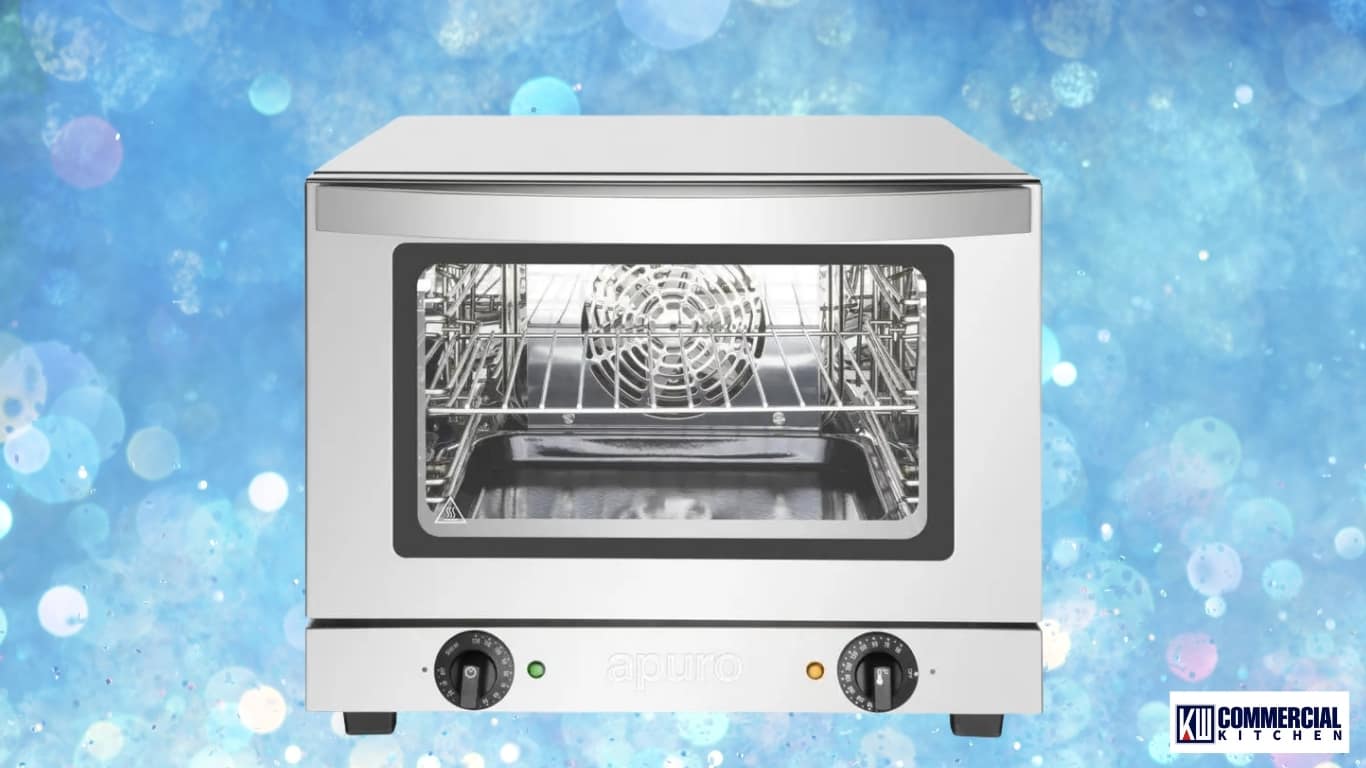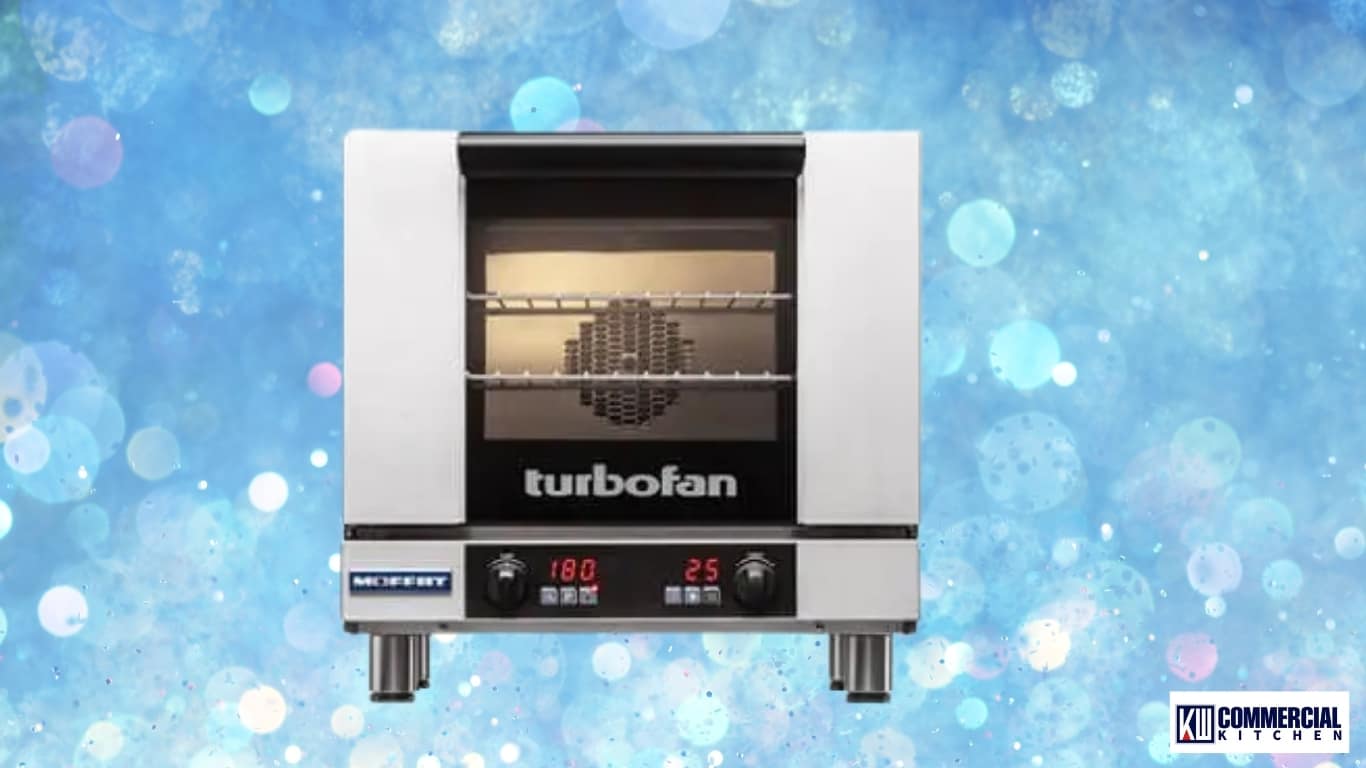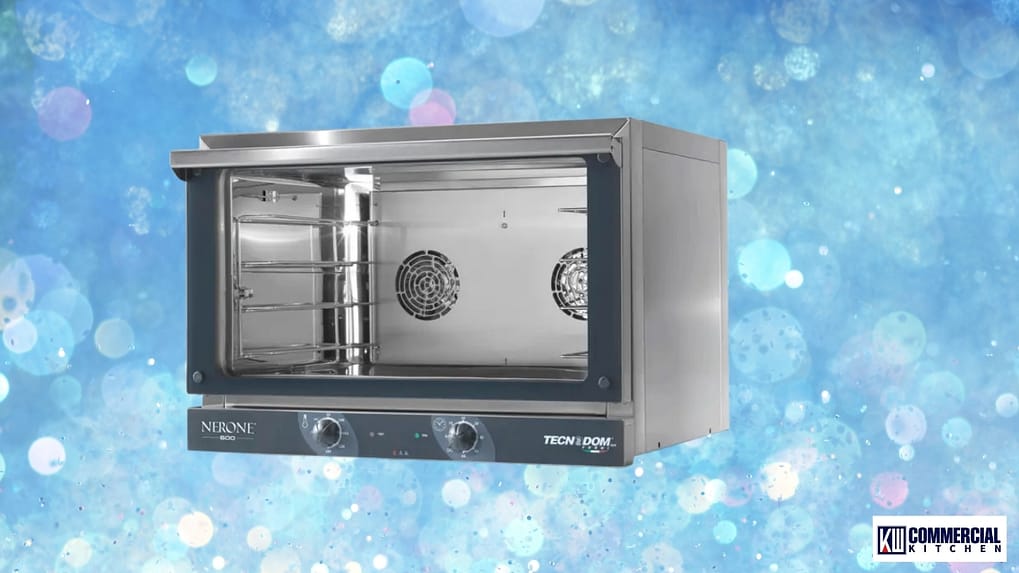Commercial Ovens · Australia · 2025
Australia’s 2025 Convection Oven Guide — Fan‑Forced vs Conventional, Gas vs Electric, Combi vs Deck vs Impinger, Menus, Ventilation, Cleaning & ROI
This is the field‑tested playbook for choosing and using a convection oven in Australian venues. You’ll find what it is, when to pick convection over conventional or combi, temperature conversion rules, gas vs electric with ventilation, cleaning SOPs, troubleshooting and simple ROI maths — all written for cafés, bakeries, pubs, QSRs and food retail.
1) Executive summary
A convection oven is a fan‑forced oven that circulates hot air for more even colour and faster cook times than “conventional” (static) ovens. For Australian kitchens the big decisions are: tray format (GN 1/1 or 600×400), gas vs electric, fan speed & steam options, ventilation path (ducted canopy vs condensate/recirculating where allowed), and menu fit (bakery, roast, reheat or speed line).
2) Convection oven 101 — components & controls
Fan‑forced heat, baffles & airflow
A high‑temperature fan drives air across heaters and through a baffle, evening out cold spots. Reverse‑fan models swap direction during a cycle to improve uniformity on full loads.
Rack formats
- GN 1/1 (530×325 mm) — common in cafés, pubs, banquets.
- 600×400 bakery trays — ideal for patisserie, bread and sheet bakes.
- Countertop half‑size — fast installs; limited capacity but quick preheat.
Controls that matter
- Fan speeds (low/med/high or multi‑step) to protect delicate bakes or boost roast browning.
- Steam burst/humidity on bakery‑focused convection models (not a full combi, but useful for crusts).
- Timers/hold, core probe (on advanced units), and programmable recipes for repeatability.
3) Convection vs conventional vs combi vs deck vs impinger
| Oven type | Typical trays / format | Preheat to 180 °C | Airflow & heat | Moisture/steam | Best for | Ventilation note | Learning curve |
|---|---|---|---|---|---|---|---|
| Convection | 6–10 GN or 600×400; double‑stack optional | Fast (esp. electric) | Fan‑forced; multi‑speed on many models | Steam burst on some bakery variants | Pastries, sheet bakes, veg, roasts, reheat | Electric may suit condensate/recirc hoods (subject to design approval); gas typically ducted | Low–medium |
| Conventional (static) | Varies; often domestic‑style | Slower; uneven on full loads | No fan or low airflow | No | Gentle bakes; small batches | Lower grease, simpler exhaust | Low |
| Combi | 6–20 GN; stacked options | Fast; powerful | Convection + controlled steam | Yes — full humidity & probes | Roasts, bake, steam, retherm, proof, cook‑hold | Water treatment; ventilation per heat/steam load | Medium–high |
| Deck | Stone/deck surfaces; 1–3 decks | Moderate; high thermal mass | Top/bottom elements; radiant heat | No (unless steam injection) | Pizza, artisan bread, pastry bottoms | Ducted canopy typical | Medium |
| Impinger / Speed | 1–2 shelves; conveyor or cavity | Very fast | High‑velocity jets + IR/microwave | No (moisture retention via speed) | QSR speed lines, toasting, melts | Ventilation per manufacturer; many need ducted canopy | Low–medium |
For product options: commercial convection ovens, combi ovens, and speed/impinger ovens.

4) Gas vs electric convection ovens
| Fuel | Pros | Watch‑outs | Great for | Typical ventilation path |
|---|---|---|---|---|
| Electric | Quick preheat; precise element control; simpler installation; often compatible with condensate/recirculating hoods for low‑grease loads (subject to design approval) | High electrical load; confirm phase/amps and circuit capacity | Bakeries, cafés, schools, venues without gas | Consult a designer to AS/NZS 1668.2; some installs approved with condensate/recirc hoods |
| Gas | Strong radiant component; lively recovery | Needs licensed gasfitter to AS/NZS 5601.1; flue/clearances; ducted canopy common | Pubs, roasts, heavy savoury production | Ducted canopy designed to AS/NZS 1668.2 with interlocks |
Electrical supply must satisfy the Wiring Rules (AS/NZS 3000). Always follow the manufacturer’s manual and local authority approvals.
6) Temperature conversion & loading rules
A reliable starting point when moving a conventional recipe into a convection oven is to reduce the set‑temperature by about 20 °C or reduce the cooking time by around 25%. Then tune to colour, texture and core temperature with your trays and loads.
| Conventional setpoint | Convection setpoint | Time adjustment | Fan speed | Visual cue |
|---|---|---|---|---|
| 220 °C | 200 °C | –15–20% | High | Deep caramelisation on edges |
| 200 °C | 180 °C | –20–25% | Med–high | Even mid‑tray colour |
| 180 °C | 160 °C | –20–25% | Medium | Uniform top colour |
| 160 °C | 140 °C | –20% | Low–med | Set centres without cracking |
- Leave space between trays; don’t crowd the baffle outlet.
- Delicate bakes prefer lower fan; roasts and chips love higher fan.
- Stagger loads for consistent colour on full racks.
7) Ventilation, power & compliance (Australia)
Kitchen exhausts should be designed to AS/NZS 1668.2 by a competent person. Many electric convection ovens on low‑grease menus are installed under condensate/recirculating hoods where permitted by the local authority and risk assessment, while gas ovens typically require a ducted canopy with interlocks.
- Gas installation: licensed gasfitter; pipework, isolation and flueing to AS/NZS 5601.1.
- Electrical: supply size, protection, and isolation to AS/NZS 3000 (Wiring Rules); confirm phase/amps.
- Food safety: follow your FSANZ‑aligned food safety program for hot holding, reheating and allergen control.
- Positioning: respect side/rear/overhead clearances and service access; secure stacked ovens.
8) Energy, throughput & ROI
Think in batches, not just kW on the label. Preheat, idle and door‑opens dominate energy use on small batches.
| Metric | Formula | Worked example | Result |
|---|---|---|---|
| Cost per hour | kW × tariff | 6.5 × $0.30 | $1.95/h |
| Preheat energy | (kW × preheat‑h) | 6.5 × 0.25 | 1.625 kWh |
| Batch cost | (preheat kWh + cook kWh) × tariff ÷ trays | (1.625 + 1.2) × $0.30 ÷ 6 | ~$0.14 per tray |
| 5‑year TCO | capex + (kW × run‑h/day × 365 × tariff × 5) | $6,500 + (2.2 × 5 × 365 × .30 × 5) | ~$11,315 |

9) Cleaning & routine maintenance (HowTo)
Daily
- Cool to safe temperature, isolate power/gas. Remove and empty crumb trays.
- Wipe door glass and gaskets with warm water and a food‑safe detergent; dry thoroughly.
- Check the fan area is free of loose liners or parchment that could block airflow.
Weekly
- Degrease racks and baffle; inspect fan guards; clean probe (if fitted).
- Confirm door closes smoothly and seals contact evenly.
Quarterly
- Deep‑clean cavity; check calibration with an oven thermometer; tighten hinges/handles.
- For gas units, have a licensed tech inspect burner/flue per the manual.
10) Troubleshooting matrix
| Symptom | Likely cause | Immediate action | Long‑term fix |
|---|---|---|---|
| Pale bakes | Fan too low; under‑loaded trays; short preheat | Increase fan; load more evenly; extend preheat | Switch to darker trays or raise setpoint slightly |
| Uneven colour | Crowded racks; blocked baffle; no reverse fan | Re‑space; clean baffle | Use reverse fan model or rotate once mid‑cycle |
| Soggy chips | Fan too low; trays not perforated | Raise fan; use perforated/mesh trays | Reduce load depth; add pre‑dry stage |
| Over‑dry pastry | Fan too high; too long | Drop fan; shorten time | Short steam burst on bakery models |
| Long preheat | Element/fan issue; door seal leaks | Check fan spins freely; inspect seal | Service elements/fans; replace gaskets |
11) FAQ
What is a convection oven?
A fan‑forced oven that moves hot air across the product for even colour and quicker cooks than conventional static ovens.
Convection oven vs conventional oven — what changes?
Expect to reduce temperature by ~20 °C or cut time by ~25%. Convection delivers more uniform colour; conventional can be gentler on delicate bakes.
Convection oven temperature conversion — is there a chart?
Yes — see the quick‑reference in this guide. Start with −20 °C or −25% time and tune by colour and core temperature.
Gas vs electric convection oven — which is better?
Electric is simple to install and precise; gas offers punchy recovery. Choose based on utilities, ventilation path and menu.
Can a convection oven run under a ductless/recirculating hood?
Some electric convection ovens on low‑grease menus are installed under condensate/recirculating hoods where permitted. A designer must assess to AS/NZS 1668.2 and the local authority must approve. Gas ovens typically require ducted canopies.
What does “convection oven convection oven” mean?
It’s a search variation users type. It refers to the same convection oven described in this guide.
When should I choose a combi oven instead?
When you need controlled steam and humidity (yields, retherm, proof/bake, cook‑hold) across many menus. See our combi ovens.
12) References (standards & guidance)
- FSANZ — Australia New Zealand Food Standards Code: obligations for hot holding, reheating and general food safety management for food businesses.
- AS/NZS 1668.2: The use of ventilation and air conditioning in buildings — mechanical ventilation in commercial kitchens (exhaust design and capture).
- AS/NZS 5601.1: Gas installations — requirements for Type A gas appliance installation (licenced gasfitter work).
- AS/NZS 3000: Electrical installations (Wiring Rules) — circuit sizing, protection and isolation.
- Always follow the specific manufacturer’s installation, operation and cleaning manual for your model.

